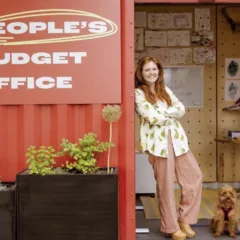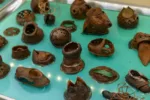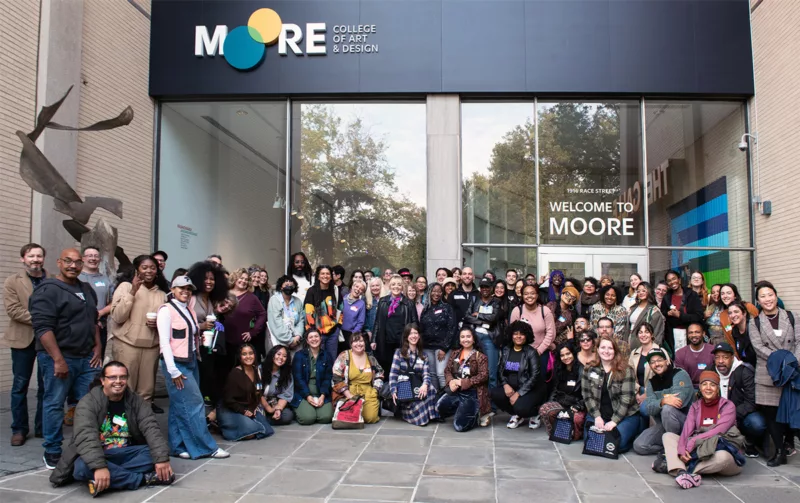
I was excited to be invited to Mural Arts’s “Created, Together.” national assembly on Oct. 20 & 21, held at Moore College of Art and Design. The convening served as a platform for artists and creatives working with communities to exchange knowledge, foster collaboration, and promote community-centered art-making.
The two-day event, set in Philadelphia, was comprised of site visits to public art projects, a film screening, and a day dedicated to networking. The program’s inclusivity was evident as it welcomed artists, administrators, community members, policymakers, students, and anyone passionate about art’s role in public spaces. The event culminated the Mural Arts Institute’s (MAI) three-year Public Art & Civic Engagement (PACE) Capacity Building Initiative funded by the Mellon Foundation. Through a National Open Call, Mural Arts invited 50 public art practitioners to join and distributed micro-grants to support their travel and make the event more accessible. PACE has supported six public art projects in collaboration with APANO Communities United Fund in Portland, OR, Louisville Visual Arts in Louisville, KY, and Southside Community Arts Center in Chicago, IL.
The first-day events focused on Philadelphia projects supported by Mural Arts. I spent time with the local project team of Color Me Back and several visiting participating artists. I feel fortunate to have met Israel Francisco Haros Lopez, a poet and artist from Santa Fe, NM. The artist has been working on community-building art for several years, and during the Covid lockdown helped to establish a farm. He was a previous partner of MAI’s Art & Environmental Justice Initiative. Lopez said, “Roseane Rodriguez (an activist in Santa Fe) would always tell me that ‘without art, there is no movement.’”
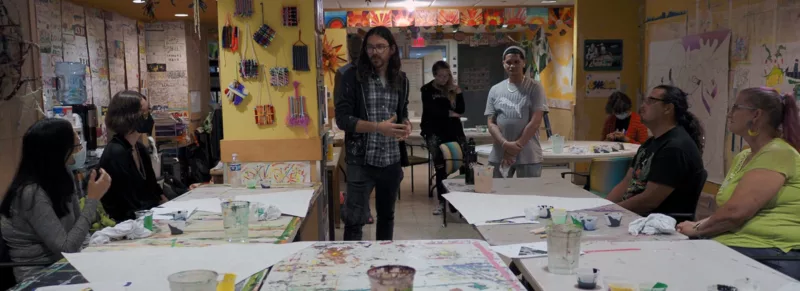
After attending my fair share of similar social justice gatherings, this one felt unlike what I’d experienced before. The energy was different, the intent was distinct, and the people were unique – from varied backgrounds and life experiences. This was a meeting of intentional souls like a big top tent revival without the fire and brimstone– a unifying of passions, a combining of forces for beauty and community. Bringing them all together from all over the country brought collective support and collective nurture.
The Institute’s PACE Initiative has distinct goals, including supporting the development of high-quality, socially engaged public art, building the capacity of artists and arts organizations, increasing access to public art in underserved communities, and promoting civic engagement and social change through art. This program seeks to leverage public art for civic engagement, encouraging dialogue and inspiring action. Did it work? Art with an agenda ought to be measured, but that can be difficult. What are the lasting effects of the work? That is a question I’m left with.
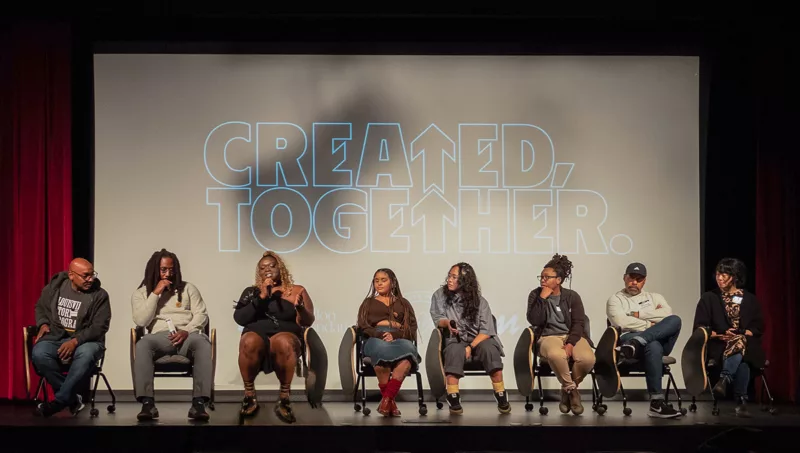
Focus on PACE Initiative Outside Philadelphia
Each of the six PACE Initiative artists produced their own short film showcasing their work, their progress, and most importantly, the lives they were impacting. In Portland, the PACE cohort is connected with the Asian Pacific American Network of Oregon (APANO). Paola De La Cruz & Lillyanne Pham worked with communities in housing projects and community spaces, focusing on mutual aid themes using their funds to produce art and funding food drives. One of the youth, who lived in the housing project while they were working, joined them in the construction of the mural and signed his name to the mural, leaving a mark of his time at the housing project. And he joined his team at the symposium in Philadelphia.
Also part of the Portland team, Midori Hirose connected to her community through sound mapping, seminars, and ceramic workshops. She worked with a multi-generational group over several weeks to create “Furin” bells, Japanese wind chimes. Midori said she started with a question, “It was a very open question, ‘How do you translate your experience of southeast Portland, and how do you translate that into the clay?’ People sat across from one another in an intimate setting while sculpting the bells. At the end of the bell sculpting, the participants exchanged bells.
In Louisville, the PACE program is connected through Louisville Visual Art. Jaylin Stewart worked with participants at the California Community Center. Jaylin said, “It was very important with my project for the community members to create something. I’m all about creating opportunities for other artists, especially those that look like me,” Donyalle Jackson was part of that opportunity; she collaborated on the mural, “You can see the forward movement, it wasn’t just a one-time deal.” When Chanel ‘Coco’ France, a seven-year-old featured in the mural, first saw the final work, she said, “When I saw the picture, I was excited, surprised, shocked and happy.” The focus was on the people of the community, and they were represented in the work itself. Jaylin summarized her work, “My goal was to strengthen the relationship between art institutions and neighborhoods like mine. It was important to me to close the gap and change the narrative” around who is included in the arts.” Since then, they’ve gone on to create ten more murals around Louisville.
In Chicago, the project worked with the South Side Community Art Center, the oldest African-American art center in America. Andrea Yarbrough focused on bringing in people who have never considered the value of art or have never considered making or participating in art. Andrea said, “I took a month to install, and I finished on site. I wanted people to come up and ask questions. To engage in the work… That’s why it was important to have the work outside.” Her focus on public-engaged art and art that was outdoors allowed everyone in the community to participate. She created numerous monuments to Black women erected throughout the city, each paying homage to a Black woman who has made an impact in Chicago’s South Side community. Cecil McDonald developed a projection screen for the art center. He created a visual collage depicting many of the residents of the historically Black neighborhood. Beyond the grant and financial support, Andrea went on to purchase a building to create their own artist coop. Cecil donated the screen to the art center for future artists.
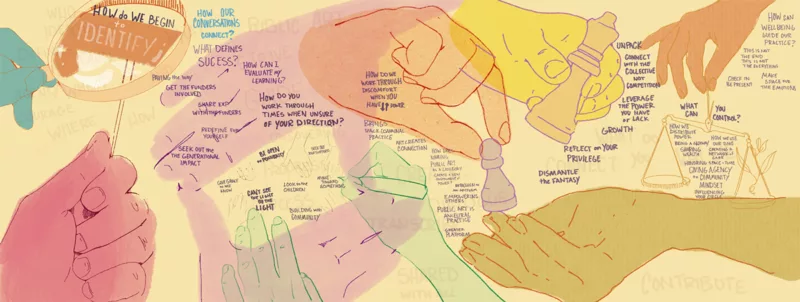
The Impact of PACE
The impact of PACE is evident in the numerous projects it has supported, which tackle a range of issues like racial injustice, economic inequality, environmental justice, immigration reform, LGBTQ+ rights, and disability rights. PACE has not only contributed to the creation of impactful public art but has also enhanced the capabilities of artists and organizations involved.
Has the program been a success? In the words of Portland partner Paola De La Cruz, “What can I say, Lillyanne and I have been kicking so much ass since this mural project. We’re working on a 228 ft mural and another mural coming up. Every project we do, mutual aid is at the center of everything we do. As much money we spend on materials, we also spend on food for people, paying folks, mentoring, and building connections.” Donyalle Jackson from Louisville said, ”I was really happy to hear that everyone has big shit going on.”
By the end of the weekend, I was swept up in the focus on mutual aid and community growth and away from a focus on competition for limited financial resources. I came away inspired by the participants, their positive outlooks, and the amount of work they created during their time with PACE. I look forward to their next endeavors and think the work and the opportunity that Mural Arts helped to foster will have a lasting impact in the participating communities and here in Philadelphia.
https://www.muralarts.org/program/mural-arts-institute/created-together/
https://www.muralarts.org/program/mural-arts-institute/initiatives/
PORTLAND:
Paola De La Cruz @happynappystudio & Lillyanne Pham @lillyannepham
LOUISVILLE:
Jaylin Steward – @jaylin_stewart
Donyalle Jackson – @artbydonniej
CHICAGO:
Andrea Yarbrough – @dre_lasoul


